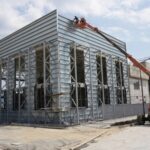Residents of the Rostov region are actively using impersonal metal accounts (IMAs) as a reliable tool for preserving and increasing their savings. According to data, in the first eight months of 2025, residents opened more than 8.5 thousand new such accounts. This attracted 116.5 million rubles in investments in precious metals.
An analysis of investment preferences shows a growing interest in classic assets. Gold remains a key protective asset for investors: every second account opened by residents was in this metal, and the volume of investments in gold accounted for 79% of the total investment in IMAs in the region. This is a significant increase compared to the same period last year, when gold accounted for 62% of investments.
Silver remains in second place: 13% of all funds in IMAs are invested in this digital metal. Palladium and platinum each account for 4% of the investment volume.
The current market dynamics fully explain the choice of Rostov investors. By the end of this summer, gold shows confident growth, approaching record levels. Its price remains high and stable amid changes in the central bank’s key rates and high demand from funds. Silver, often called the “younger brother of gold,” also shows positive dynamics, supported not only by investment but also by industrial demand. To a large extent, investors choose it as an alternative due to the high cost of gold.
Platinum and palladium are still less noticeable in the portfolios of private investors but remain important metals due to demand in the automotive and industrial sectors. This year, these metals are showing higher volatility, making them a good accumulation tool for experienced investors willing to take risks.
When opening a regular deposit, an investor chooses a currency. With an impersonal metal account, the principle is similar, only instead of a currency, a metal is chosen: gold, silver, etc. There is no need to store real ingots—the metal is purchased virtually, so there is no need to worry about its safety or insurance. The profitability of such a deposit depends on the growth of the metal’s price, not on the exchange rate. This option is most suitable for those who are used to investing for the long term or want to distribute their assets across different investment formats.






